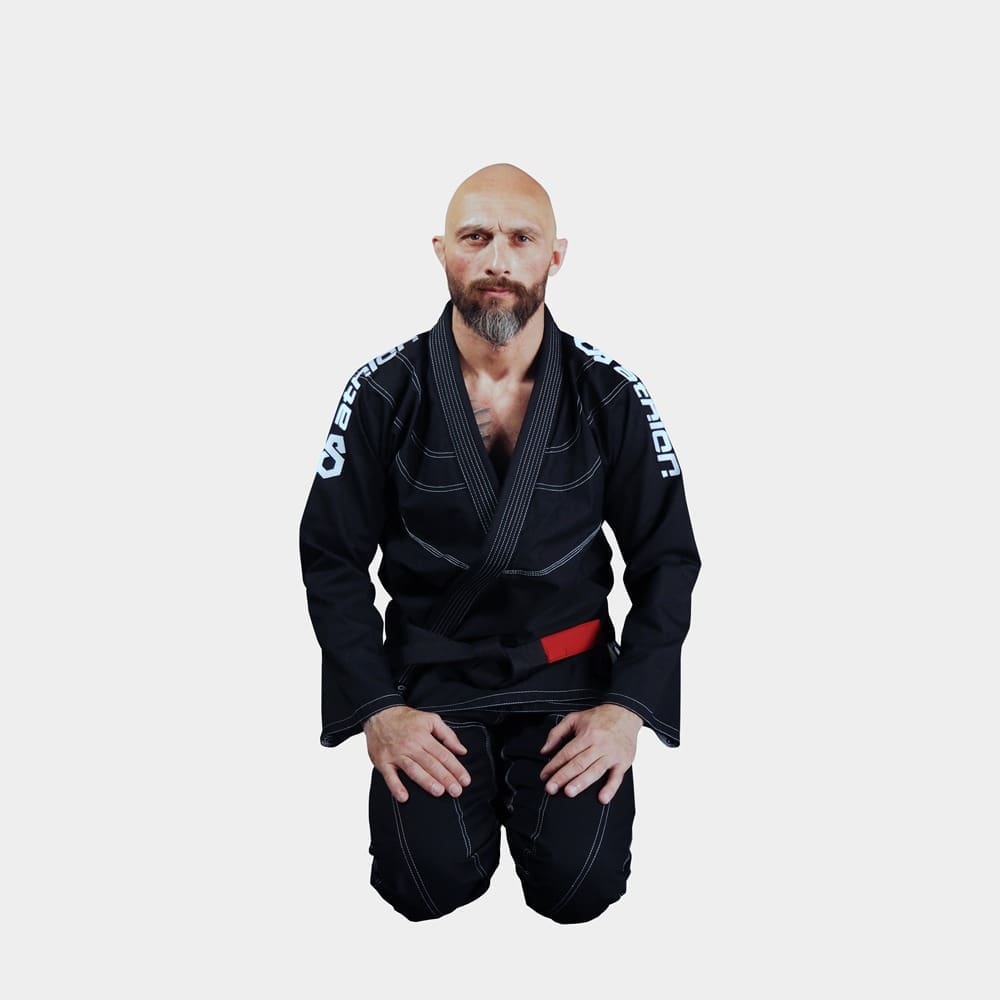A question often in the mind of martial art beginners, is use of Gi or Kimonos for a different martial art. Can they be used interchangeably in Judo, Karate or BJJ. People who have practiced Judo or Karate in the past may want to use their Gi for BJJ. So, the question is, are the uniforms similar, or different? Can you take your Karate kimono on the BJJ tatami? Can you use your BJJ Gi for Judo?
The short answer is that each martial art needs its own Gi . So, no, you probably should not use your Judo or Karate Gi for BJJ. Here are a few good reasons why.
Fit to the technique
The fit of the Gi is probably the difference you will feel the most while training and competing. Every Gi has been designed to fit the specific techniques used by each martial art, and the Karate, Judo, and BJJ techniques are radically different.
- Karate Gi: Probably the simpler and the lightest of Gis, the Karate Gi is usually white, made fro light cotton, with no particular reinforcement.
- Judo Gi: Judo has much more of a focus on grips and throws than Karate. Because Judo is a lot about submission-based attacks using your own uniform against you, Judo Gis are rather loose and soft, with longer and wider sleeves, making gripping easier. They also feature reinforced stitching at key grip points like the collar, shoulders, sleeves, chest, or knees.
- BJJ Gi: it is designed to make gripping and controlling harder for your opponent. Therefore it has a rather tight fit, shorter and narrower sleeves and a reinforced collar that is more difficult to grab. Less fabric means less grabbing, and this is what a BJJ Gi is made for. Heavier fabric also means that it can somehow protect you better during falls and fighting on the ground.
-
Tae Kwon Do Gi: this is probably the most different Gi from the above, as it is less a wrap-around jacket and more of a v-neck style top to prevent the jacket from opening during the fight. Tae Kwon Do Gis are also typically light, to allow the fighters to execute their strikes fast.
Even though you can practice in the Gi designed for a different martial art, it is possible that your Gi will interfere with your learning the technique right, or can make you more vulnerable to your opponent and give you a hard time.
Fabric and durability
Gis for different martial arts are made from different weight fabric and different stitches. The more grips and drops in a martial art, the strongest your Gi should be, in order to avoid tearing in during training or competition. This is why Karate and Tae Kwon Do Gis are typically lighter, as these arts favor strikes to grips. Judo and BJJ, on the other hand, are all about grappling your opponent and therefore the Gis are sturdier, heavier and more reinforced.
BJJ Gi are usually made with extra stitching, heavier cotton fabrics and often a ripstop weaving. Judo Gis are usually made from thinner, lighter fabrics. Karate Gis are even lighter and prone to tearing if gripped in BJJ or Judo, even the heavyweight ones.
Competition rules to abide with
If you have a BJJ Gi that you want to use to some other martial art, you should make sure that it is not “fancier” than allowed. Judo, karate and tae kwon do traditionally go for plain white, with very limited embroidery on the sleeve if any, no patches and no contrast stitching. BJJ, on the other hand, is more permissible with large patches and visible stitching.
Even if your school is ok with you training and practicing in either type of Gi, things change radically in competitions. Color and patches can or cannot be admitted, depending on the martial art. There are also norms about the length of jackets, sleeves and pants. Judo, especially, can have strict rules concerning the Gi you wear during a competition, and you risk not being allowed to compete if your Gi is not up to the norm.
That said, if you are just training and your school allows for it, go on and try your old Gi from a previously practiced MA and see if it works for your tin raining. The important thing is to feel comfortable in your Gi, and to be able to learn the techniques correctly. If your “other martial art” Gi gets in the way of your technique, rips, or tears, then you will definitely know that it is time to switch to a Gi more adapted to your martial art. so the use for Gi or kimonos for a different martial art might be posible for training purposes but most likely not for most competitions.





